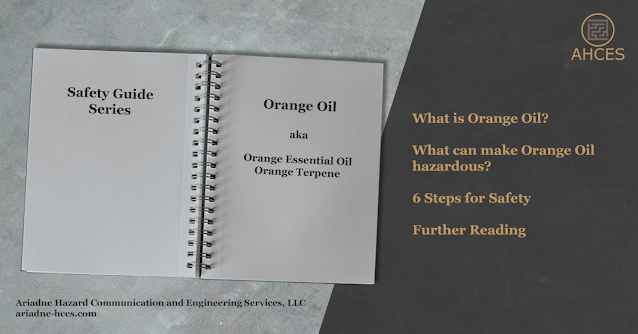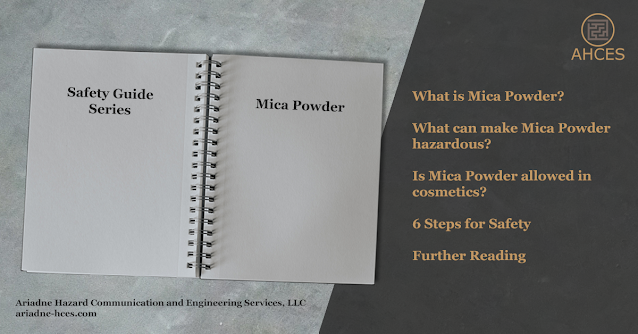Sodium Lauryl Sulfoacetate Safety Guide
What is Sodium Lauryl Sulfoacetate?
Sodium lauryl sulfoacetate (SLSA), also known as lathanol, is an organic compound. It is commonly used as a surfactant in cleaning agents, including hand soaps and bath fizz products. There are also pharmaceutical uses for sodium lauryl sulfoacetate.
Sodium lauryl sulfoacetate has the CAS Number 1847-58-1.
Notable Properties of Sodium Lauryl Sulfoacetate
Sodium lauryl sulfoacetate is a solid at room temperature, often found in a white power or flake form when purchased in commercial quantities.
Sodium lauryl sulfoacetate is soluble in water and can also be found in aqueous solution form.
What Makes Sodium Lauryl Sulfoacetate Hazardous?
Sodium lauryl sulfoacetate, especially when concentrated, can be irritating to the skin, eyes, and respiratory system. Repeated skin exposure to aqueous solutions of SLSA, as low as 0.18%, can result in strong skin irritation in some individuals. This irritation is not considered sensitizing, in that it has not been shown to increase in severity with repeated exposures.
Consumption of sodium lauryl sulfoacetate can result in nausea and can have a laxative effect. SLSA is utilized as an active ingredient some types of laxatives for this property.
Sodium lauryl sulfoacetate is not considered flammable for transportation or workplace safety, but is an organic compound and can still act as fuel in a fire.
Sodium Lauryl Sulfoacetate Frequently Asked Questions
What does sodium lauryl sulfoacetate do in shampoo?
Sodium lauryl sulfoacetate is a surfactant, which helps in creating stable foam. It can also act as a wetting agent, which can increase the cleaning product's ability to contact and spread across the surface to be cleaned.
Is sodium lauryl sulfoacetate safe in cosmetics?
The Cosmetic Ingredient Review (CIR), which is as expert panel funded by but independent from the Personal Care Products Council, has an ingredient review on sodium lauryl sulfoacetate. Per the CIR, SLSA is considered safe when used in present applications and concentrations as standard in the personal care items industry.
This also agrees with data collected by the Hazardous Substances Data Bank, indicating that while SLSA can be irritating, it does not seem to trigger allergic reactions.
6 Steps for Safety
Step 1: Read the Warnings
When working with a product for the first time, always read all the safety documents first. This includes safety data sheets, which should be provided by the manufacturer or importer of the sodium lauryl sulfoacetate product. There may also be an OSHA chemical label or a Consumer Protection label on the packaging of the sodium lauryl sulfoacetate containing product. These documents all contain important information on the hazards of the product and instructions on how to mitigate those hazards.
Note that different products which contain sodium lauryl sulfoacetate can have different safety considerations depending on other ingredients and the relative concentrations of those ingredients.
Step 2: Prepare Your Workspace
Creating a safe workspace, sometimes referred to as engineering control, is a key component of working safely with any potentially hazardous substance.
When in a solid, powdered form, sodium lauryl sulfoacetate has increased risk of becoming airborne and being inhaled. Since it can be a respiratory hazard, it is best practice to minimize airborne SLSA. An air purifier with a filter rated for organic particles of the size of the SLSA powder being worked with can reduce this risk.
Step 3: Gather Your PPE
For handling concentrated sodium lauryl sulfoacetate containing products, the following PPE is recommended depending on the form that the SLSA is in. The degree of protection and any additional environmental protections will depend on the concentration and quantity of the SLSA, as well as any other hazards present while working.
For powdered, dry SLSA, the following PPE is recommended.
- Eye Protection
- Safety goggles which form a protective seal around the eyes or a combination of safety glasses and a face shield can be used to prevent SLSA dust from reaching the eyes.
- Open safety glasses, which do not have a sealing surface, will not work in preventing dust from reaching the eyes.
- Respiratory Protection
- A dust mask or respirator meant for organic particles will protect the respiratory system from irritation.
- Gloves
- Basic disposable gloves will prevent SLSA from touching the skin on the hands and causing irritation.
- Long Sleeves
- Long sleeves will prevent SLSA powder from touching the skin on the arms and causing irritation.
- Either a long-sleeved shirt, long-sleeved coat, or disposable sleeves will work.
- Launder any contaminated closing separately to prevent cross-contamination and inform anyone laundering the clothing of the presence of lauric acid so they can take any necessary precautions.
For SLSA in an aqueous solution, which has risks
associated with liquid splashes, the following PPE is recommended.
- Eye Protection
- Safety goggles which form a protective seal around the eyes are best for protecting from liquid splashes.
- Respiratory Protection
- A dust mask or respirator meant for organic particles will protect the respiratory system from irritation.
- If a mask becomes wet from a liquid splash, make sure to replace it to maintain optimal filtration and protection.
- Gloves
- Basic disposable gloves, or other rubberized gloves, will prevent aqueous SLSA from touching the skin on the hands and causing irritation.
- Rubberized Apron
- A rubberized apron, or another body covering that prevents aqueous SLSA from soaking into clothing, is best to prevent skin exposure.
Step 4: Clear Your Workspace
Having a clear workspace is important for safety as it can prevent accidents caused by tripping, as well as allowing you to easily spot any spills.
This is also a good time to ensure all engineering controls, such as a dust filter, are functional.
Step 5: Do The Work
If engineering controls and PPE are used properly, working with sodium lauryl sulfoacetate can be done safely.
If work cannot be completed in one sitting, be sure to properly seal any sodium lauryl sulfoacetate containers to prevent spills or accidental release when not in use.
Step 6: Clean Up
Clean up any small drips or spills with an appropriate absorbent material.
Be sure to dispose of any waste in accordance with local regulations.
Further Reading
The National Library of Medicine has a PubChem article on Sodium Lauryl Sulfoacetate.
Check out the Safety Guide Series Hub for more safety guides.
Sources Cited
Burnett, C. L., Bergfeld, W. F., Belsito, D. V., Cohen, D. E., Klaassen, C. D., Liebler, D. C., Rettie, A. E., Ross, D., Slaga, T. J., Snyder, P. W., Tilton, S., Fiume, M., & Heldreth, B. (2023). Sodium Lauryl sulfoacetate. International Journal of Toxicology, 42(3_suppl). https://doi.org/10.1177/10915818231204274
National Center for Biotechnology Information (2025). PubChem Annotation Record for , SODIUM LAURYL SULFOACETATE, Source: Hazardous Substances Data Bank (HSDB). Retrieved July 7, 2025 from https://pubchem.ncbi.nlm.nih.gov/source/hsdb/7256.
National Center for Biotechnology Information (2025). PubChem Compound Summary for CID 23668827, Sodium Lauryl Sulfoacetate. Retrieved July 7, 2025 from https://pubchem.ncbi.nlm.nih.gov/compound/Sodium-Lauryl-Sulfoacetate.





Comments
Post a Comment